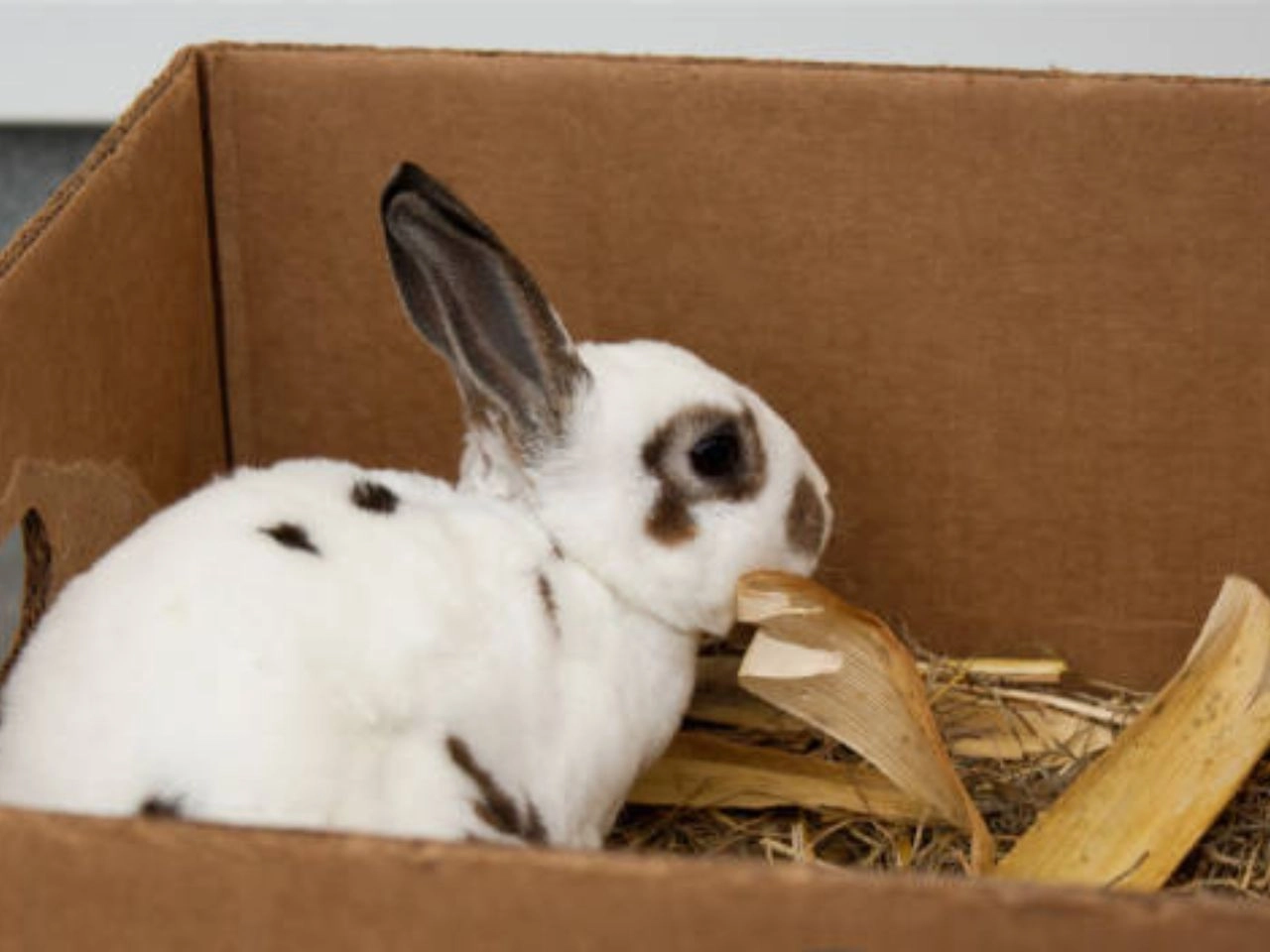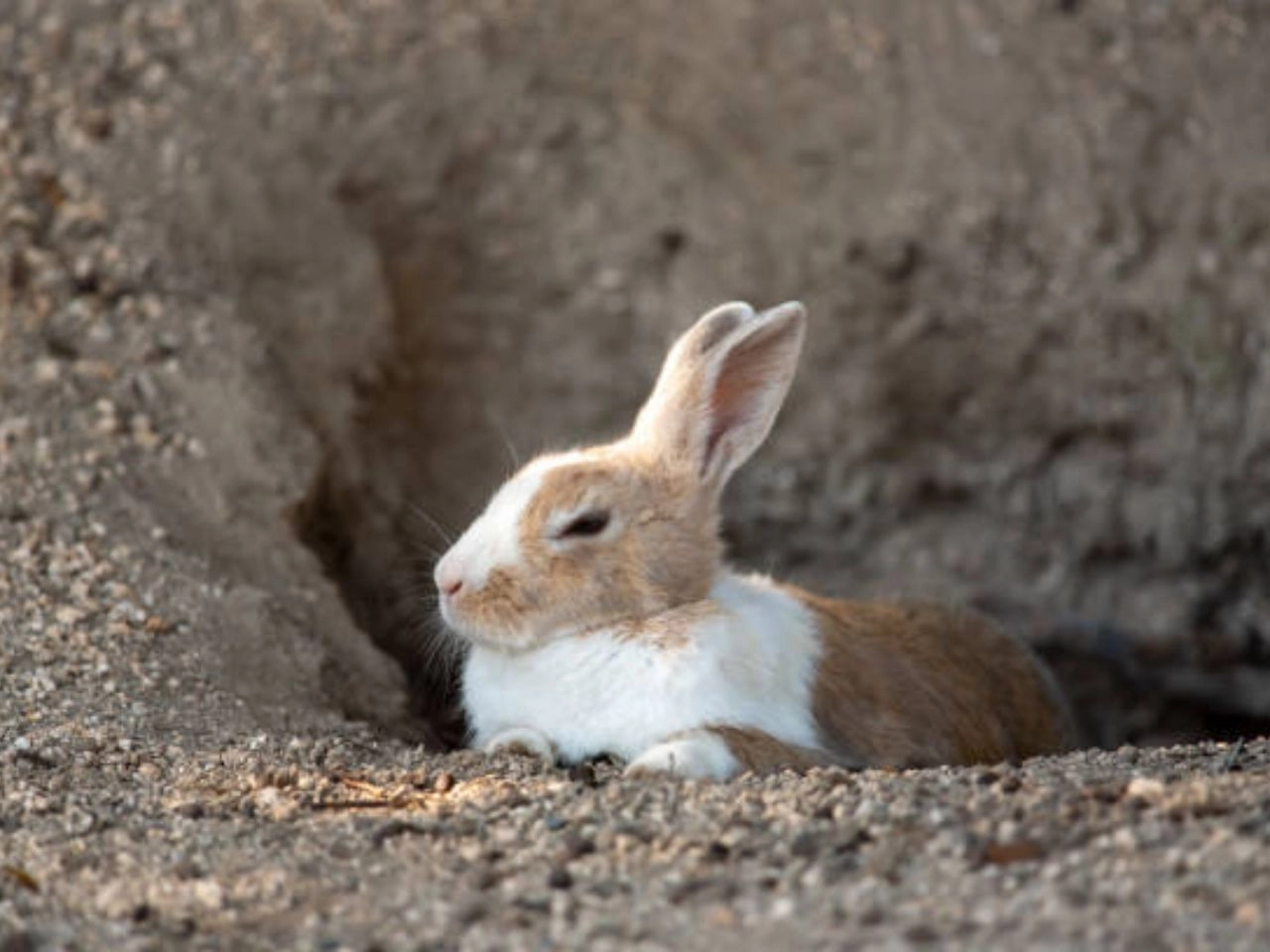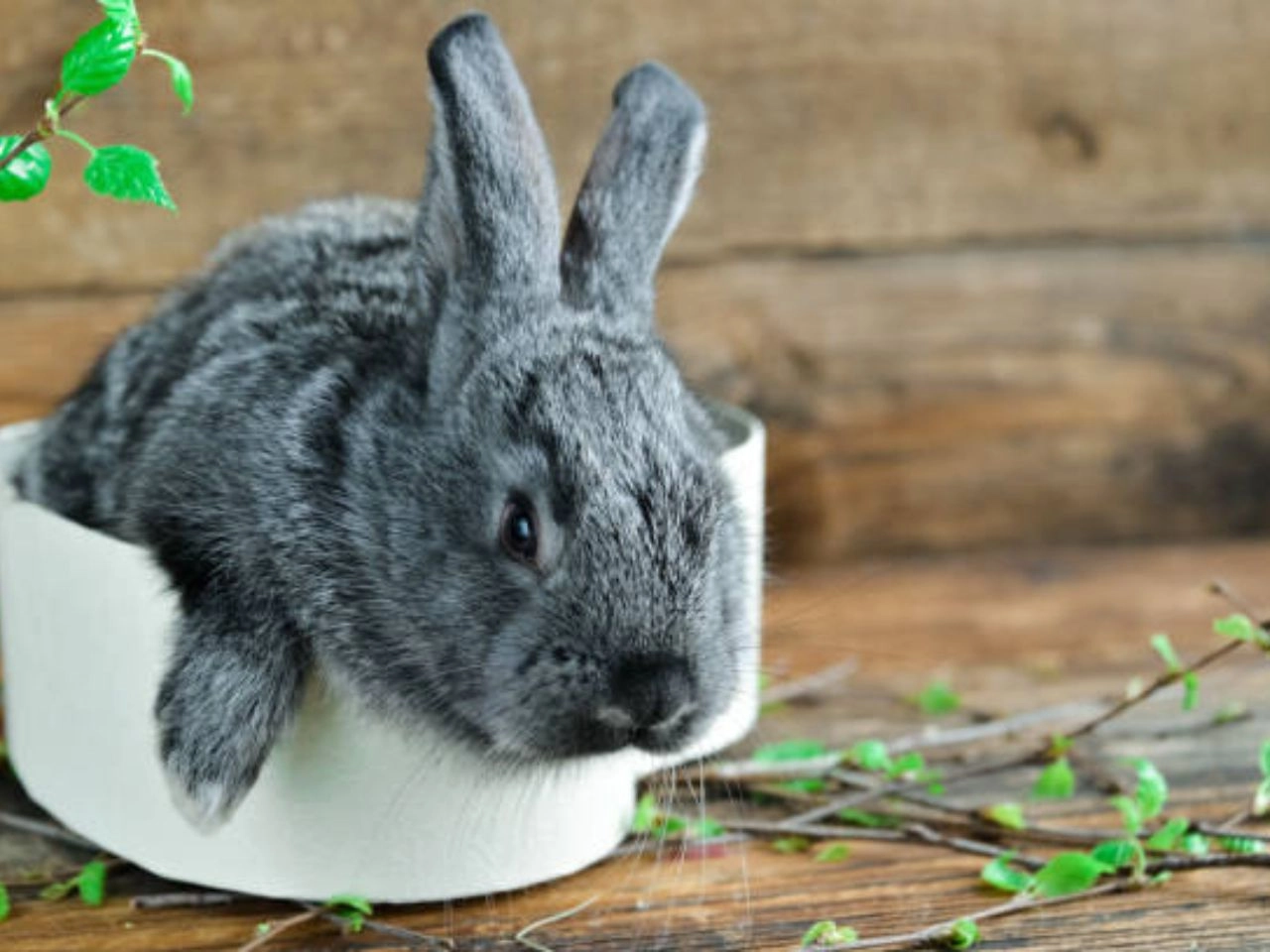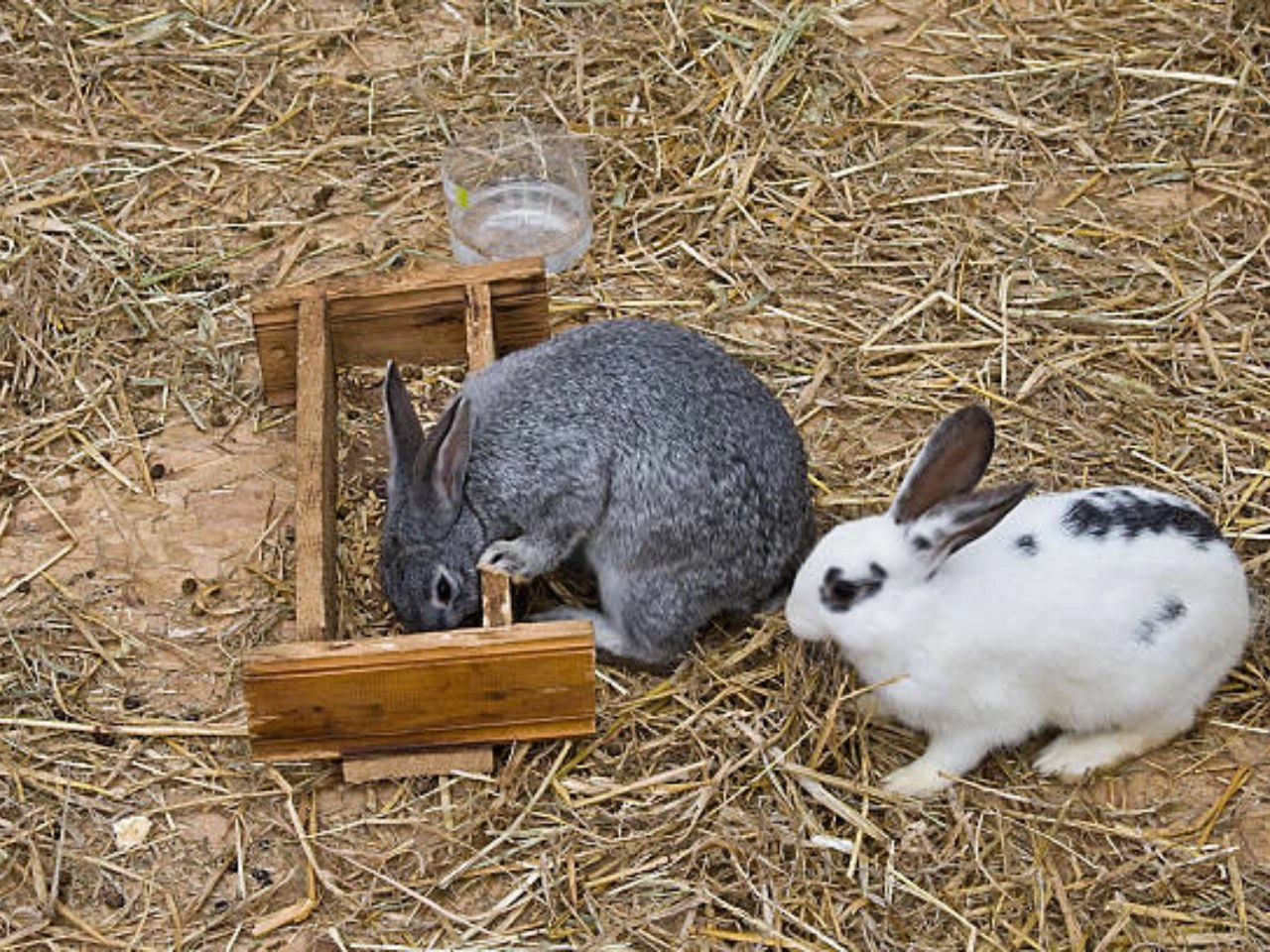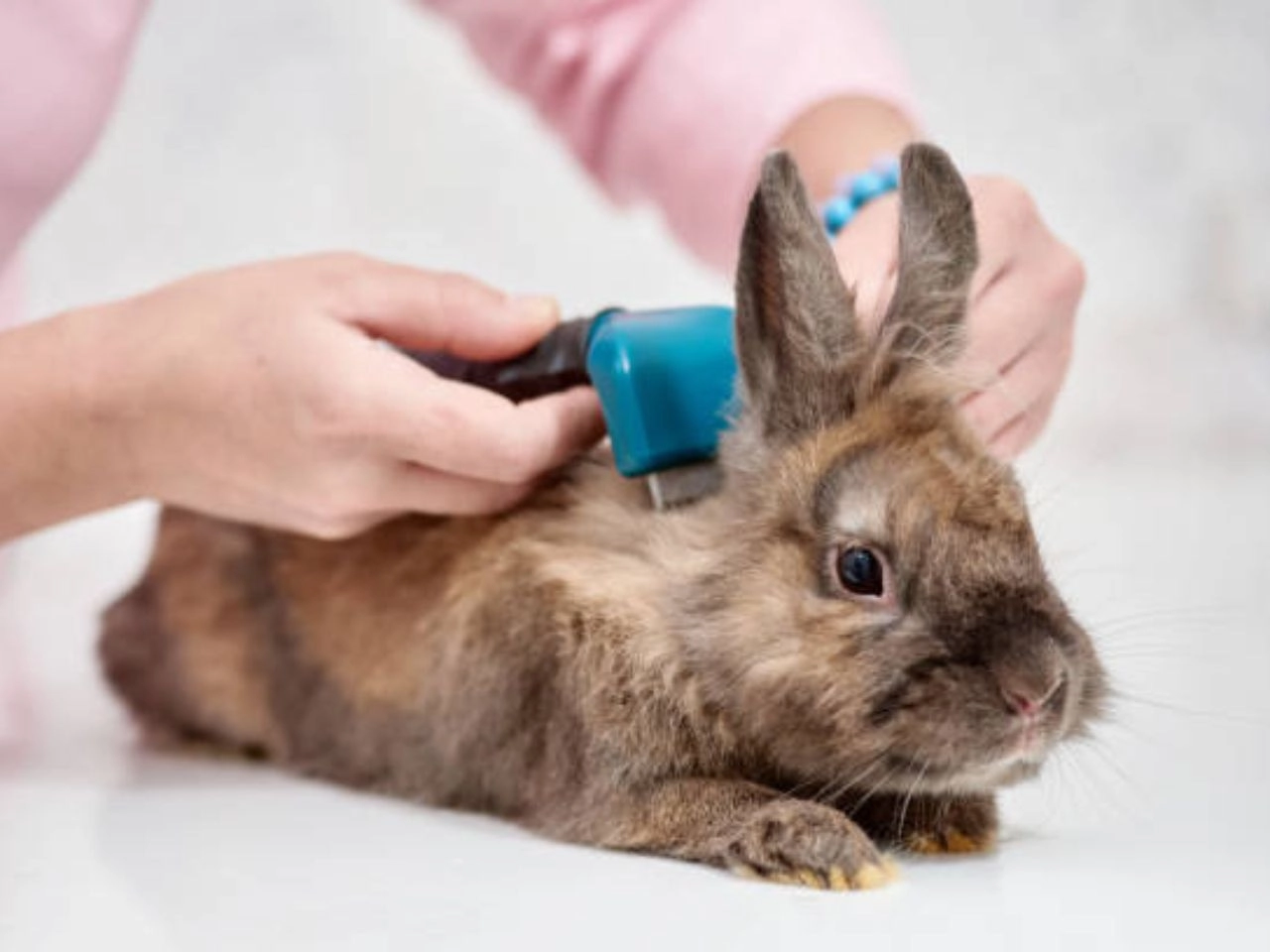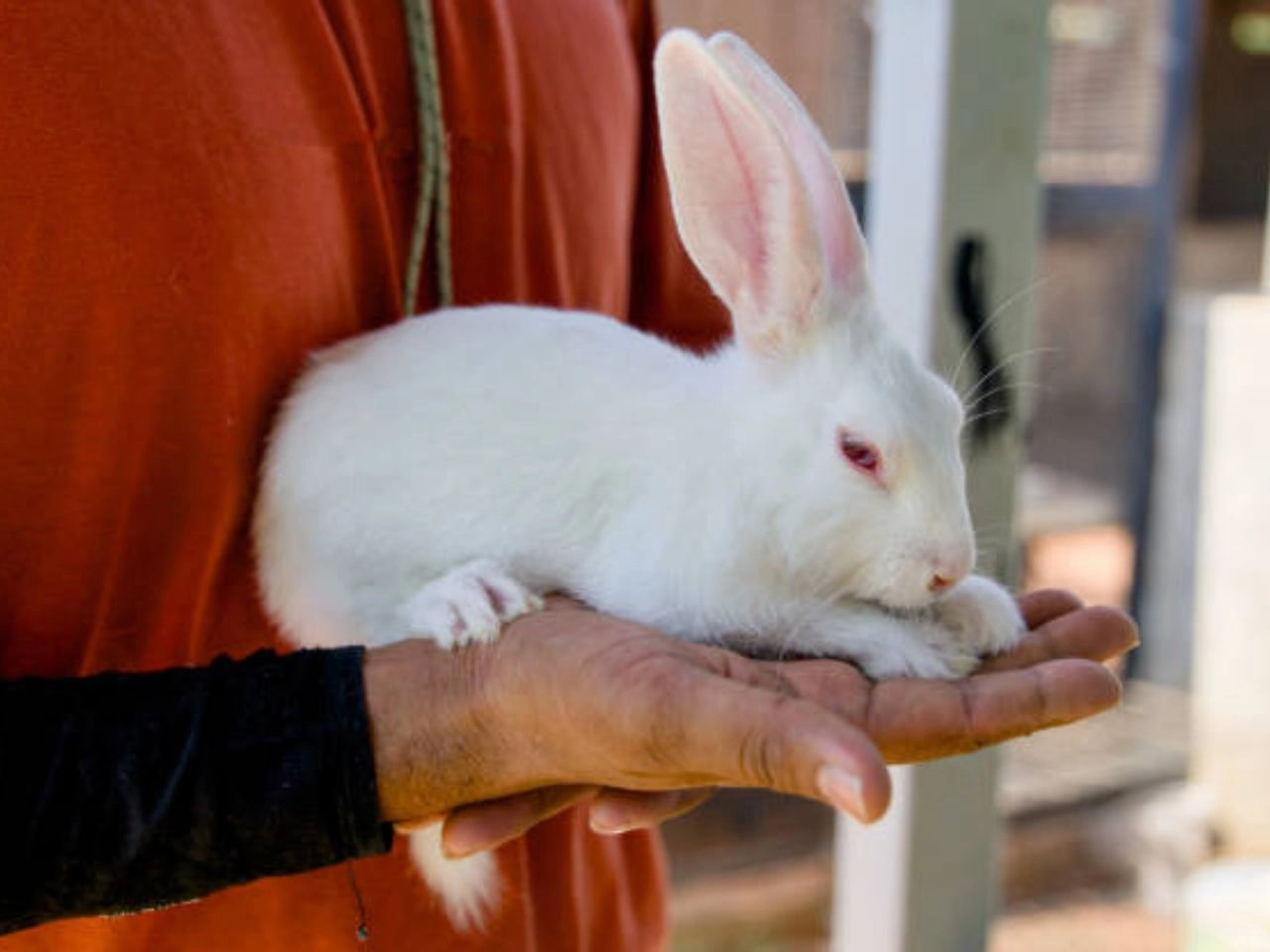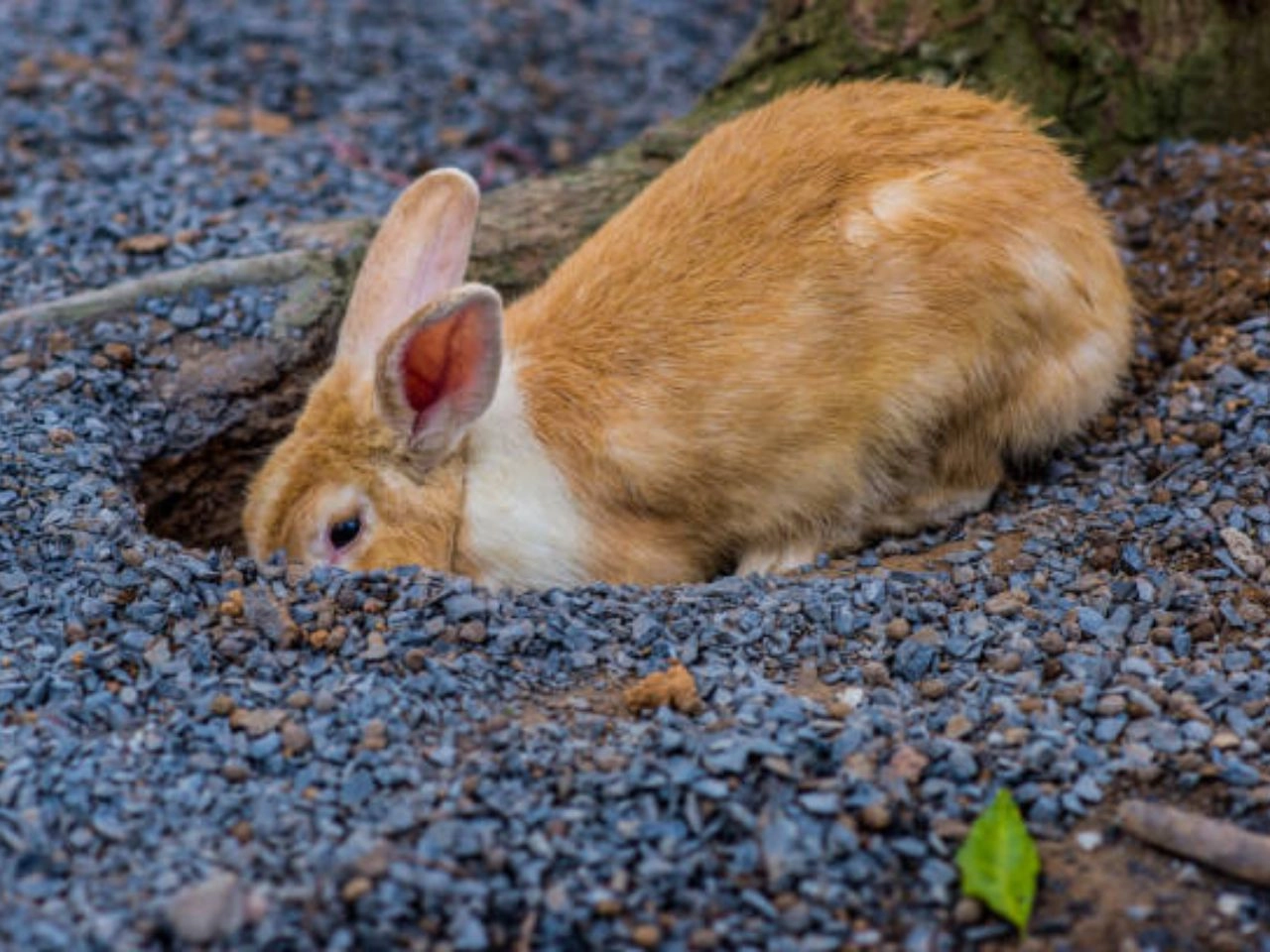Yes, rabbits are territorial. They mark their territory using scent glands located under their chin.
Rabbits, often seen as cute and docile pets, have an instinct to guard their territory. They use scent glands under their chin to mark and establish their domain. This behavior ensures they have a secure and familiar space, free from intruders.
Understanding this territorial nature is crucial for pet owners to manage multiple rabbits in one household. Fights can occur if new rabbits are introduced without proper precautions. Creating separate spaces and gradual introductions can help maintain harmony. Recognizing these instincts helps in providing a better environment for rabbits, ensuring they feel safe and secure.
Introduction To Bunny Behavior Are Rabbits Territorial
Rabbits are fascinating creatures. They have unique habits and behaviors that intrigue many pet owners. Understanding these behaviors helps in creating a harmonious living environment. This section will explore how rabbits interact socially and their territorial instincts.
Rabbit Social Structure
Rabbits are social animals. They thrive in groups. In the wild, they live in large colonies. These colonies have a clear social hierarchy. Each rabbit knows its place in the group.
Dominant rabbits often control the best resources. This includes food, water, and nesting areas. Subordinate rabbits must wait their turn. They show respect by grooming the dominant ones.
Interactions between rabbits include grooming, playing, and sometimes fighting. Fighting establishes the social order. Owners must understand these dynamics. It helps to maintain peace among pet rabbits.
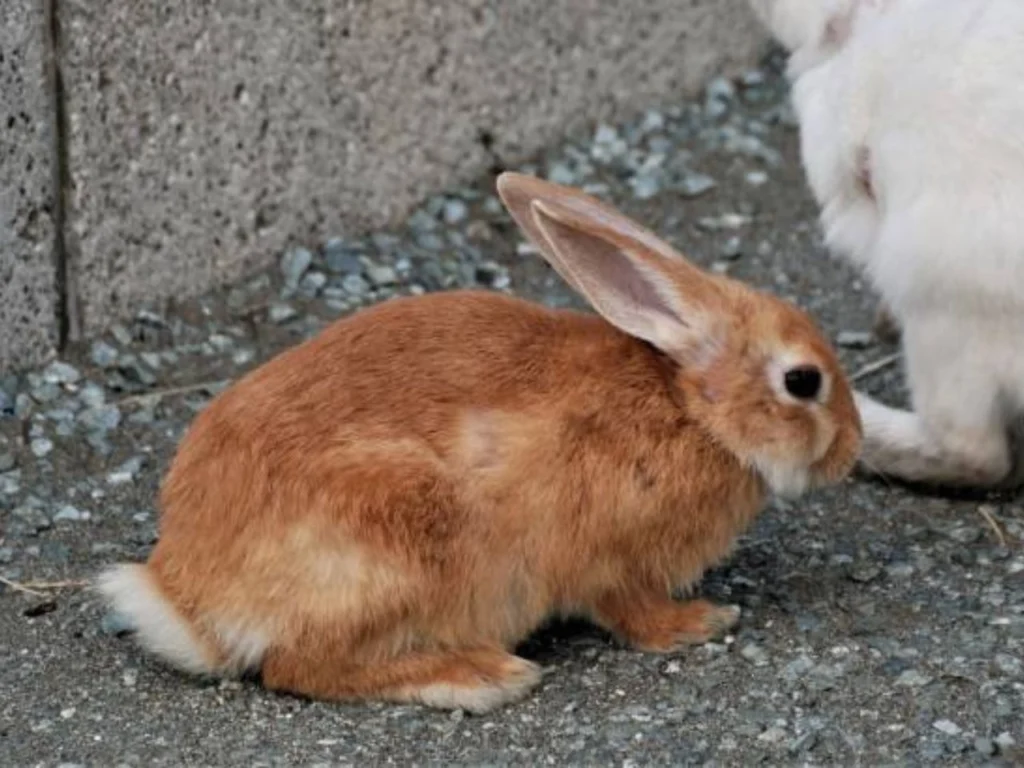
Territorial Instincts In Rabbits
Rabbits are naturally territorial. They mark their territory with scent glands. These glands are located under their chin. They also use urine and droppings to mark their space.
Territorial behaviors can include thumping, chasing, and even biting. These behaviors are more common in unneutered rabbits. Neutering can reduce territorial aggression.
Introducing a new rabbit to an existing group must be done carefully. Rabbits need time to adjust. Initial meetings should be supervised. This helps to prevent fights and injuries.
| Behavior | Description |
| Chinning | Rubbing chin on objects to mark territory |
| Thumping | Stomping back legs to warn of danger or claim territory |
| Chasing | Chasing other rabbits to assert dominance |
| Biting | Using teeth to defend territory |
Territory Marking In Rabbits
Rabbits are known for their cute appearance and gentle nature. Yet, they can be quite territorial. They mark their territory in various ways to communicate ownership and boundaries. Understanding these behaviors helps us know our furry friends better.
Scent Glands And Their Role
Rabbits have special glands that help them mark their territory. These glands are located in different parts of their body. The two main types of glands are:
- Chin Glands: These glands are located under the rabbit’s chin.
- Anal Glands: These are found near the rabbit’s bottom.
Rabbits use these glands to leave their scent on objects. This scent tells other rabbits that the area is claimed. The scent is unique to each rabbit, like a fingerprint.
Chinning: A Unique Behavior
Rabbits commonly mark their territory through a behavior called “chinning.” Here’s how it works:
- The rabbit rubs its chin on an object.
- The chin gland releases a small amount of scent.
- This scent marks the object as part of the rabbit’s territory.
Rabbits may chin a variety of objects. These can include their cage, toys, food bowls, and human owners. Chinning is a normal and healthy behavior for rabbits.
By understanding territory marking in rabbits, we can better care for these fascinating pets. It also helps us create a more harmonious living environment for them.
Bunny Battles: Signs Of Territorial Aggression
Rabbits can be very territorial animals. They often show aggressive behavior to protect their space. Understanding these signs can help in managing their aggression. Let’s explore some common signs of territorial aggression in rabbits.
Thumping And Charging
One of the first signs of a territorial rabbit is thumping. Rabbits thump their hind legs to warn others. This sound is a clear sign they are feeling threatened. You might also see them charging at other rabbits or people. Charging is a way they try to scare off intruders.
Biting And Scratching
If a rabbit feels its territory is invaded, it may start biting. Biting is a way for them to show dominance. It can also be a sign of fear. Scratching is another form of aggression. Rabbits use their strong back legs to scratch. This can cause harm to other rabbits or even humans.
| Signs of Aggression | Description |
| Thumping | Rabbits thump their hind legs to warn others. |
| Charging | Rabbits run quickly towards the threat to scare it away. |
| Biting | Rabbits use their teeth to show dominance or fear. |
| Scratching | Rabbits use their back legs to scratch and defend themselves. |
Recognizing these signs can help you manage your rabbit’s behavior. It can also prevent injuries to other pets or family members. Always keep an eye on your rabbit’s actions. This way, you can ensure a peaceful environment for everyone.
Home Sweet Home: Rabbits And Their Space
Rabbits are known for their playful nature. But did you know they are also territorial? They need a space they can call their own. This helps them feel safe and happy.
Cage Size And Territory
A rabbit’s cage size is very important. A small cage can make your rabbit feel stressed. A good rule is to have a cage at least four times the size of your rabbit. This gives them room to hop and play.
Consider adding levels to the cage. Rabbits love to explore and jump. A multi-level cage can make their home more interesting.
Importance Of Personal Space
Rabbits need their own space, just like people do. This space is where they can eat, sleep, and relax. It helps them feel secure.
Make sure your rabbit has a quiet spot in the house. Loud noises can scare them. A calm environment will make them happier.
| Feature | Ideal Size |
| Cage Size | At least 4 times the rabbit’s size |
| Levels | Multiple levels for exploration |
| Quiet Spot | A calm environment |
Interactions Between Rabbits
Interactions Between Rabbits can be both fascinating and complex. Rabbits are social animals, but they can also be quite territorial. Understanding their behavior is key to keeping them happy and healthy.
Bonding Bunnies
Bonding bunnies is a process that requires patience. Rabbits need time to get used to each other. It is important to introduce them in a neutral space. This helps in reducing territorial behavior. You can start with short, supervised sessions.
Use treats and toys to create positive associations. Gradually increase the time they spend together. Look for signs of affection, such as grooming. If they groom each other, it means they are getting along well.
| Signs of Bonding | Explanation |
| Grooming | Rabbits clean each other as a sign of trust. |
| Lying Close | They feel safe and comfortable together. |
| Sharing Food | They eat from the same bowl without fighting. |
Dealing With Dominance of Are Rabbits Territorial
In rabbit groups, there is always a dominant one. The dominant rabbit will show assertive behaviors. These include mounting, chasing, and nipping. This is normal and part of their social structure.
To manage dominance, provide enough space and resources. Each rabbit should have its own food bowl, water bottle, and hideout. This helps reduce competition and stress.
- Mounting: A way to establish dominance.
- Chasing: Ensures the submissive rabbit knows its place.
- Nipping: A warning to back off.
If fights break out, separate the rabbits and try reintroducing them later. Always supervise their interactions to ensure safety.
Human Interaction And Territory
Rabbits are naturally territorial creatures. They often guard their space with great care. Understanding their territorial behavior is crucial for harmonious interaction. This helps in ensuring both you and your rabbit feel comfortable.
Approaching A Rabbit’s Territory
When you enter a rabbit’s space, do so slowly. Quick movements can startle them. Crouch down to their level to appear less threatening. Extend your hand gently, allowing them to sniff you. This helps them get used to your scent.
Avoid loud noises or sudden actions. These can scare the rabbit. Use a calm voice when speaking. This reassures the rabbit that you mean no harm.
Respecting Rabbit Boundaries
Each rabbit has its own comfort zone. Observe their body language for signs of discomfort. If they thump their hind legs or retreat, give them space.
Do not force interaction. Let the rabbit come to you. Respect their need for personal space. This fosters trust and strengthens your bond.
- Signs of discomfort: Thumping, retreating, or flattening their ears.
- Signs of comfort: Relaxed posture, grooming, or approaching you.
Creating a safe and comfortable environment for your rabbit is key. Provide a designated area where they can retreat. This could be a cozy hutch or a quiet corner. Make sure this space is free from disturbances.
By respecting your rabbit’s territory, you build a stronger, more trusting relationship. This leads to a happier, healthier pet.
Creating A Peaceful Rabbit Environment
Rabbits can be territorial animals. Providing them with a peaceful environment is crucial. A well-thought-out habitat reduces stress and territorial behavior. This guide helps you create a perfect space for your rabbit.
Proper Habitat Setup
A proper habitat setup is essential for a rabbit’s peace. Ensure the cage or hutch is spacious. Rabbits need space to hop and explore. The size of the enclosure should be at least four times the size of the rabbit. A larger space is always better.
Location matters. Place the enclosure in a quiet area. Avoid high-traffic zones. Rabbits need a calm environment to feel safe. Ensure the cage has a solid floor. Wire floors can hurt a rabbit’s feet.
Provide hiding spots. Rabbits feel secure with places to hide. Use cardboard boxes or specially designed rabbit hideouts. Ensure these hiding spots are easily accessible.
| Habitat Element | Importance |
| Spacious Enclosure | Allows free movement |
| Quiet Location | Reduces stress |
| Solid Floor | Protects rabbit’s feet |
| Hiding Spots | Makes rabbits feel secure |
Toys And Distractions of Are Rabbits Territorial
Toys and distractions are vital for rabbit happiness. They keep rabbits engaged and reduce boredom. Provide various toys like chew toys, tunnels, and balls. Chew toys help keep their teeth healthy.
Rotate the toys regularly. This keeps the environment stimulating. Rabbits enjoy exploring new objects. DIY toys like cardboard tubes can be great fun. They are inexpensive and easy to make.
Mental stimulation is crucial. Simple puzzle toys can keep your rabbit’s mind active. Hide treats in toys to encourage foraging behavior. This mimics their natural instincts.
- Chew toys
- Tunnels
- Balls
- Cardboard tubes
- Puzzle toys
Understanding Mixed Territorial Signals
Rabbits often give mixed signals about their territory. These signals can confuse their owners. It’s important to know what these signals mean.
Misinterpreting Playfulness
Sometimes, rabbits seem playful. They might run around or hop. This can look like they are happy.
But, this playfulness can be a sign of something else. Rabbits might be marking their territory. They use playful moves to show dominance.
| Behavior | Possible Meaning |
| Running in Circles | Marking Territory |
| Jumping High | Showing Dominance |
| Hopping Around | Exploring Boundaries |
Reading The Signs Correctly
To understand your rabbit, you need to read the signs correctly. Look at the whole picture, not just one action.
- Watch for repeated behaviors.
- Notice where they spend most time.
- Check if they are using scent glands.
Rabbits use their scent glands to mark territory. They rub their chin on objects. This means they are claiming that space.
Be aware of their body language. Ears up and alert can mean they are on guard. A relaxed rabbit shows they feel safe.
The Role Of Neutering In Territorial Behavior
Rabbits can be very territorial. This can lead to fights, spraying, and stress. Neutering is a common solution. It helps to reduce these behaviors. But how effective is it? Let’s explore the role of neutering in managing territorial behavior in rabbits.
Benefits Of Neutering
Neutering offers many benefits. Here are some key ones:
- Reduced Hormonal Activity: Neutering lowers hormone levels. This makes rabbits calmer.
- Less Spraying: Unneutered rabbits often spray urine to mark territory. Neutering reduces this habit.
- Improved Health: Neutered rabbits are less prone to certain cancers. This includes reproductive cancers.
Impact On Aggression Levels
Neutering greatly impacts aggression levels. Here’s how:
| Before Neutering | After Neutering |
| High aggression | Reduced aggression |
| Frequent fights | Fewer fights |
| Constant marking | Less marking |
Neutered rabbits are less likely to fight. They are more relaxed and friendly. This makes them easier to manage. It also makes them better pets.
Case Studies: Territorial Rabbits In Action
Rabbits are known for their cute, fluffy appearance. Yet, they can be quite territorial. This section explores real-life case studies of territorial rabbits. We will dive into successful integration stories and challenges faced by rabbit owners.
Successful Integration Stories
Many rabbit owners have experienced the joys of integrating new rabbits. Here are some stories that highlight successful integration.
- Case Study 1: Two rabbits, Snow and Fluffy, were successfully bonded. Their owner used a slow introduction process.
- Case Study 2: Bella and Max were initially aggressive. Over time, they became inseparable friends.
Successful integrations often require patience. Creating a neutral space can help reduce territorial behaviors.
Challenges And Solutions
Integrating rabbits is not always smooth. Challenges arise when rabbits display strong territorial behaviors. Here are some common challenges and their solutions:
| Challenge | Solution |
| Fighting | Separate them and reintroduce slowly. |
| Marking Territory | Clean marked areas and provide more litter boxes. |
| Resource Guarding | Ensure enough food, water, and toys for both rabbits. |
Conclusion: Embracing Rabbit Quirks
Rabbits are fascinating creatures with unique behaviors. Understanding their territorial nature helps in creating a loving and happy environment. Let’s delve into the key takeaways and tips for nurturing these adorable pets.
Summary Of Territorial Understanding
Rabbits are naturally territorial. They mark their spaces with scent glands. This behavior is normal and part of their instinct. Respecting their territory is crucial for their well-being. Recognizing signs of territoriality prevents stress and promotes harmony.
Tips For Happy, Healthy Bunnies
- Provide ample space: Ensure your rabbit has enough room to roam.
- Designate personal areas: Give them specific spots for eating and sleeping.
- Use positive reinforcement: Reward them for good behavior to reduce territorial aggression.
- Maintain a routine: Consistent feeding and playtimes make them feel secure.
- Introduce slowly: When adding new pets, do so gradually to reduce stress.
| Key Point | Explanation |
| Space | Rabbits need room to move and explore. |
| Personal Areas | Specific spots help them feel safe. |
| Positive Reinforcement | Rewards reduce aggression. |
| Routine | Consistency lowers stress. |
| Slow Introduction | Gradual changes prevent anxiety. |
- Observe your rabbit’s behavior daily.
- Provide engaging toys and activities.
- Ensure a balanced diet with fresh veggies.
- Regular veterinary check-ups are essential.
- Socialize your rabbit with care and patience.
FAQ(Are Rabbits Territorial)
Are Rabbits Territorial Over Their Owners?
Rabbits can be territorial. They might show possessiveness over their space and favorite humans. Bonded rabbits may guard their owners.
Are Rabbits Territorial In The Wild?
Yes, rabbits are territorial in the wild. They establish and defend their home ranges. This behavior helps protect resources and mates.
Do Wild Rabbits Fight For Territory?
Yes, wild rabbits fight for territory. Males often engage in aggressive behavior to defend their space. Territorial disputes can involve chasing and biting.
What Is A Territorial Behavior In Rabbits?
Territorial behavior in rabbits involves marking their area with scent glands and defending it from intruders. They may display aggressive actions like chasing or biting to protect their space. This behavior is common in both wild and domesticated rabbits.
Rabbits can be quite territorial, especially in their own space. Understanding this behavior helps in providing better care. Respect their boundaries and create a harmonious living environment. This ensures a happy, healthy rabbit and strengthens your bond. Always observe and respond to their needs for a thriving companionship.
